Comics without superheroes become the new big driving force of cinema

This week's release of Juliette in Spring, a French film based on a comic by Camille Jourdy, and the Spanish film La van, which adapts the graphic novel of the same name by Martín Tognola and Ramon Pardina, underscores the growing wave of live-action film versions of comics that are often misnamed for adults (in an attempt to distance themselves from superhero comics). This phenomenon, with precursors like Ghost World (2001) and American Splendor (2003), and in Spain, Stigmata (2009), is now constantly fueling a cinema in need of different themes.
As film and comic book critic Elisa McCausland points out, “especially after the pandemic, the audiovisual sector has accelerated its production and consumption methods, and, given the demand for projects, comics and graphic novels have emerged as creative hotbeds, an opportunity that comic book authors have also seen to jump into a better-paid medium than publishing.”
It may not always be better paid, but it's true that filming with live actors speeds up production much more, to the detriment of animated versions, which are more expensive, slower to create... and which can also hide from many audiences the fact that the script is adapting a comic: there are still viewers reluctant to see animation, even if it features characters and themes completely removed from those of hooded figures in capes. This economic reduction, and the possibility of reaching a large audience for the most underground comics, encouraged the initial push at the turn of the century with Ghost World, by Terry Zwigoff adapting a work by Daniel Clowes (they would repeat as an artistic couple in 2006 with The Art of Strangling); American Splendor, by Shari Springer Berman and Robert Pulcini, which delved into the life and work of screenwriter Harvey Pekar; and Oldboy (2003), with Korean Park Chan-wook adapting the manga by Japanese Garon Tsuchiya. "Then," McCausland points out, "the superhero cycle that continues to this day began." And that explosion was attenuated.
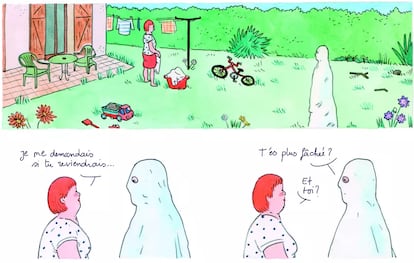
However, it has never ceased. Even though the languages are different between, as McCausland defines, “two media that run the risk of being read as false friends.” In January, in Paris, the director of Juliette in Spring, Blandine Lenoir, explained while promoting her film: “In a comic strip, we can allow ourselves to multiply very beautiful and poetic images, purely for visual pleasure, without necessarily moving the story forward. Something impossible in cinema. On screen, I also demystified the mysteries surrounding certain characters. For example, Juliette didn't have a job. And that's always an aspect that makes me uncomfortable as a viewer. So I chose to make her an illustrator, which allowed me to better understand the character through her drawings.”
The hand that draws on screen is that of the comic's creator, Camille Jourdy (of whom Paco Roca is a fan), who also collaborated on the script, and who had already enjoyed seeing another good adaptation of another of her comics, Rosalie Blum (2015), on screen.
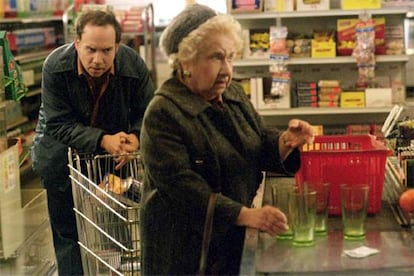
For McCausland, "the best adaptations have more to do with respecting the spirit of the original source, adapting it to the language of each medium, than with its literal translation. Examples? Zack Snyder's 300 , inspired by Frank Miller's graphic novel, or Robert Zemeckis's Here, which adapts Richard McGuire's Aquí . In Spain, the case of Álex Montoya's La casa stands out, the success of the format between past and present. I would say that in series for platforms there have been more satisfactory results (El vecino, La Fortuna) , as also certified by El eternauta."

Both The House and La Fortuna are based on works by Paco Roca, the most adapted author of Spanish graphic novels. “I like to see my characters on screen. And with one exception, I've always been adapted with respect, by filmmakers who were readers, lovers of my work, respectful even of my framing,” he explains from Germany, where he's participating in a festival. “I feel closer to my characters when they jump into animated film, of course, but I'm very interested in seeing the nuances that real-life actors bring, which I could never show with drawings. That's one of the limits of comics.”

More Spaniards? Adán Aliaga bravely launched his comic strip, Estigmas , into Lorenzo Mattotti and Claudio Piersanti's work. Aliaga himself approached the totem pole of El eternauta, although he ended up making a documentary about its creator's widow. In María y yo , Félix Fernández de Castro played with techniques and formats to show the relationship, already told in the comic, between comic artist Miguel Gallardo and his daughter. "It took us quite a bit of work to publish the comic without even thinking about it becoming a film," explains Ramon Pardina , the screenwriter of La furgo , both in the comics and on film, with a smile.
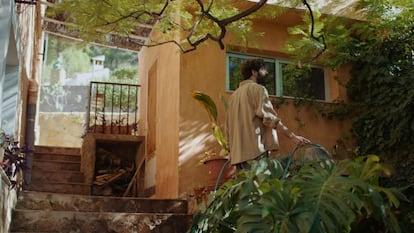
Pardina recalls, first, his conversations with cartoonist Martín Tognola, "who had the original idea" for creating the comic; second, its launch at the 2018Barcelona Comic Fair , and that same year, director Eloy Calvo's enthusiasm for adapting the story of Oso, a man eking out a living in a van after his divorce founders and whose only emotional lifeline is his daughter. "It's been a complicated journey, and at the same time, in the era of audiovisuals, we've been very fast."
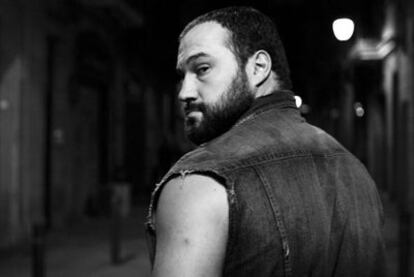
As a film scriptwriter, Pardina, who praises the journey from comic strip to the image of Wilson (another Clowes comic), Ghost World and Ninjababy, confesses that it was more difficult for him to adapt some moments from the comic to the screen than to directly write the script for the film: “Every time I had to adapt something it was like suffering, a stomach ache that warned me that something wasn't quite working.” Roca insists: “The thing is that comics are not the cinema of the poor, but rather are much more like a novel: your reader is in charge.”

That's why the writer of The Van has greatly modified the narrative... although there is one detail that has survived all the screenings: "When Bear finds the wallet full of money, he returns it without taking the bills, but he keeps the gym membership to shower with. It defines his character very well." And even though you were part of the creative process, what did you feel when you saw the film for the first time? "A rather explosive mix of emotions, it was very... shocking."
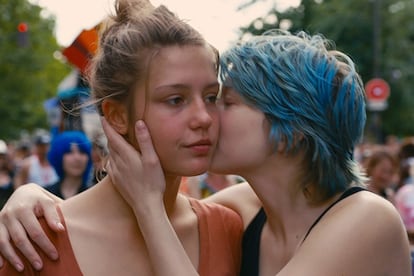
The journey of La van is strange in Spanish cinema, although much more common, in this 21st century, in the rest of Europe (Tamara Drewe, Lulu femme nue, Blue is the Warmest Colour , Chicken with Plums, The Death of Stalin or Kingsman), the United States (The Diary of Teenage Girl, The Crow, Network, Atomic Blonde, Edge of Tomorrow, V for Vendetta, A History of Violence, Road to Perdition, Sin City, Men in Black, From Hell, Scott Pilgrim vs. the World, Kick-Ass, Ghost in the Shell or Polar, which adapts a graphic novel by the Spanish Víctor Santos) and Asia (Ichi the Killer, Airdoll and Our Little Sister, the last two by the Japanese Hirokazu Kore-eda . Also, the triple somersault of Snowpiercer, in which the Korean Bong Joon-ho adapts with Anglo-Saxon actors the French comic by Benjamin Legrand, Jean-Marc Rochette and Jacques Lob). And as a historical reference of this wave of the last two decades, the mythical Barbarella (1968), by Roger Vadim, with Jane Fonda.
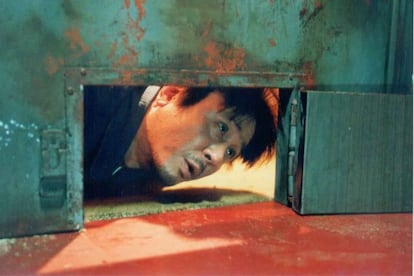
Roca, despite all his experience, insists that no red lines can be drawn in adaptations. "As soon as you sign the contract, you're sold," he reflects. "It's no longer your work, although, as luck would have it, no one has betrayed my spirit or felt they were telling a story contrary to my intention." And regarding Spanish cinema, the Valencian does feel that audiovisual media is increasingly turning to the Spanish graphic novel "because there's a lot of thematic freedom and because the vignettes provide a wealth of information for the cinematic development." If the examples aren't multiplying, "it's because it's very difficult to make a film."
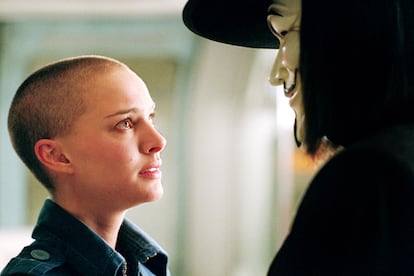
Pardina, from the entire trip, has one inartistic detail that has stayed with her: “Film is much more expensive than comics. In my first draft of the script, I made that mistake, not calculating the costs of what I was proposing. Obviously, drawing something is much cheaper than filming it.” And Blandine Lenoir learned from the process “that you have to fight to maintain poetry, whatever the language.”
EL PAÍS


%3Aformat(jpg)%3Aquality(99)%3Awatermark(f.elconfidencial.com%2Ffile%2Fbae%2Feea%2Ffde%2Fbaeeeafde1b3229287b0c008f7602058.png%2C0%2C275%2C1)%2Ff.elconfidencial.com%2Foriginal%2F786%2Fecd%2F4f7%2F786ecd4f7b2b99b0b70d0f0d0d06c42e.jpg&w=3840&q=100)



